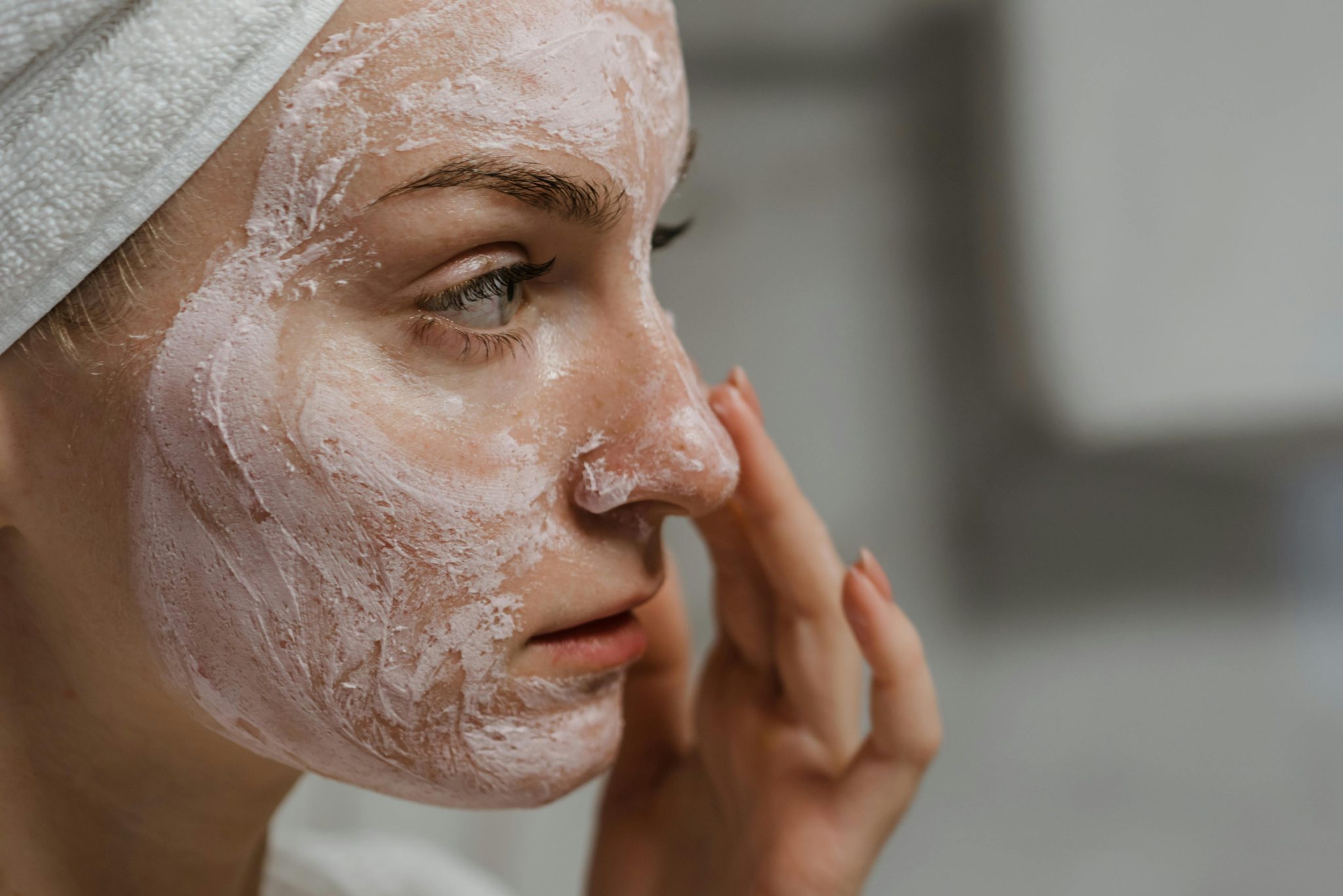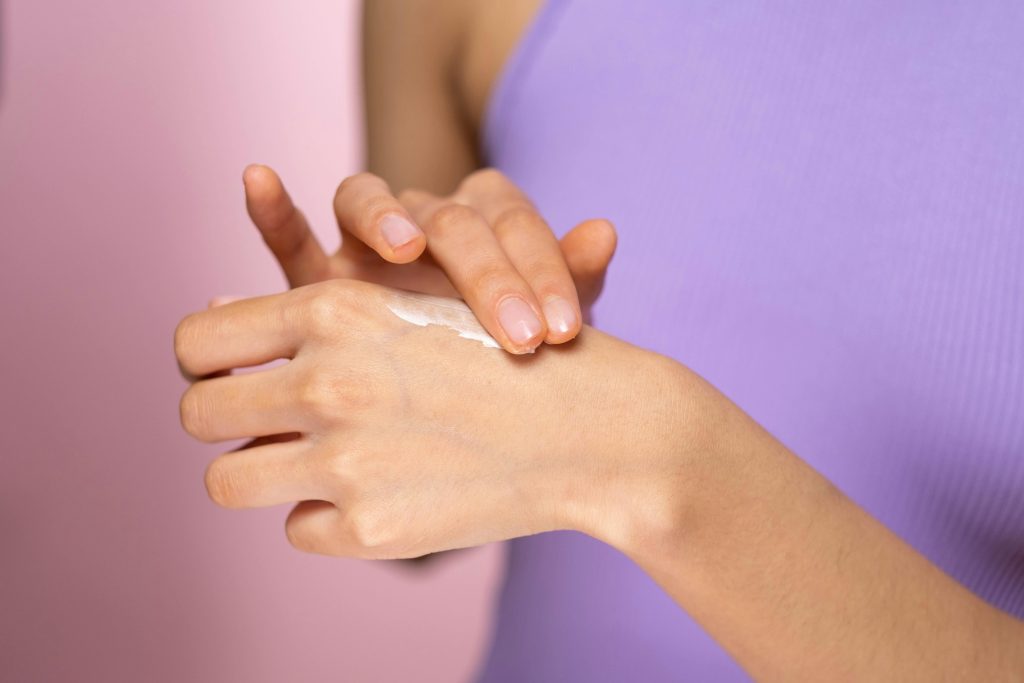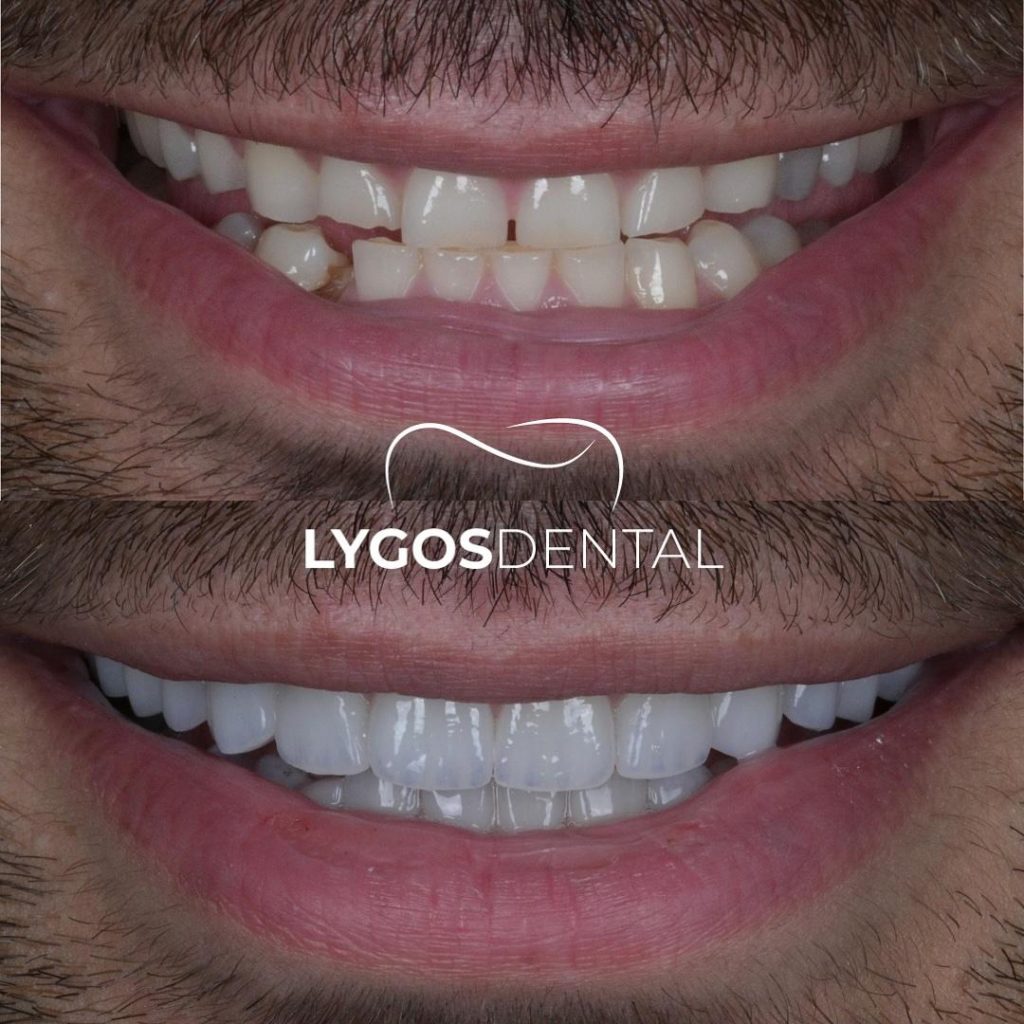Applying creams or ointments can seem tricky when you want to do it right and avoid mistakes. Many people feel unsure, and it is easy to use too much or skip a step. This can keep the medicine from working as well as it should.
This guide shares simple steps for safe and effective cream use, all based on expert advice. Keep reading to learn how you can care for your skin with more confidence.
Preparing for Application
Before I apply any topical cream, I always wash my hands well. Then, I check the label and follow the instructions on the medication closely.
Wash and dry hands thoroughly
Good hand hygiene helps stop germs from spreading during skin care. I use soap and warm water to clean my hands before using any topical medication or cream. I make sure to rub all parts of my hands, between the fingers and under my nails.
The Centers for Disease Control and Prevention (CDC) says at least 20 seconds of scrubbing works best.
Drying hands well is just as important. Wet hands can pick up or pass on more germs. I use a clean towel or paper towel for drying. Clean and dry hands help prevent infection and keep the skin application safe and effective.
Keeping hands clean prevents the spread of infections, according to the CDC.
Check the label and instructions on the medication
I always check the medication label for directions before starting any skin application. The instructions tell me how much cream or ointment to use and how often to apply it. They also list any areas to avoid, such as around the eyes or mouth.
Some creams treat specific skin conditions like eczema, psoriasis, or acne. I look for warnings about side effects or drug interactions.
I note any instructions for applying with gloves or washing hands right after. Prescription topical medication may have different dosing rules from over-the-counter creams. Using the correct amount helps prevent irritation and ensures transdermal therapy works as intended.
If I see words or symbols I don’t understand, I ask my pharmacist or healthcare provider for help. Accurate use supports a safe skin care regimen and effective treatment.
Ensuring Skin Readiness

I always start by cleaning the area where I will apply the cream. It’s best to avoid applying it on skin that is broken or irritated unless my doctor says it’s okay.
Clean the application area
First, I wash the skin with mild soap and lukewarm water. This step removes dirt, oil, sweat, or makeup so the topical medication can work better. Gently patting the skin dry with a clean towel helps avoid irritation.
If using creams for dermatological treatment or transdermal therapy, keeping the area clean lowers risk of infection.
I make sure not to scrub hard since that can cause redness or tiny cuts. Following good hygiene before ointment application helps creams absorb into healthy skin and gives better results from my skin care regimen.
Avoid broken or irritated skin unless directed by a doctor
I avoid applying topical creams on broken or irritated skin unless my doctor says it’s okay. Doing this can cause more irritation and slow healing. Skin that is damaged may absorb medication differently, leading to unwanted side effects.
I always check the area first before applying any cream.
Taking care of my skin matters a lot. If there are cuts or rashes, I wait until they heal before using topical treatments. This helps me get the best results from my medication without causing extra pain.
To understand the best technique, it’s essential to know how to apply canesten cream on a man effectively.
Steps to Apply Topical Creams
To apply topical creams, I start with the amount my doctor prescribed. Then, I spread a thin layer on my skin without rubbing too hard.
Use the prescribed amount
Using the prescribed amount of topical cream is key for safety and effectiveness. I always check the medication instructions to find the right dosage. Applying too little may not help my skin condition, while using too much can cause irritation.
I spread a thin layer over the affected area, ensuring even coverage. This helps with skin absorption and maximizes benefits without side effects. Taking care to follow these guidelines keeps treatment on track and my skin happy.
Apply a thin, even layer
I apply a thin, even layer of topical cream on the affected area. This helps the skin absorb the medication better. Using too much cream can cause irritation or reduce its effectiveness.
A small amount goes a long way. I spread it gently across the skin using my fingertips.
While applying, I avoid rubbing too hard. Gentle pressure is best for an even coat. It allows the skin to soak up all the benefits without any discomfort. With this method, I ensure that I follow treatment guidelines properly for effective results in dermatological care.
Avoid rubbing too vigorously
Applying topical creams requires a gentle approach. Rubbing too hard can irritate the skin and reduce the cream’s effectiveness. I spread the cream in a thin layer using my fingers.
Light pressure is all that’s needed for proper absorption. The skin should feel smooth, not sore or red after application.
Taking care during this step helps avoid side effects and ensures proper skin care. Next, I focus on any safety precautions during application.
Safety Precautions During Application
When applying topical creams, I wear gloves if needed. I also make sure to keep my hands away from my eyes and other sensitive areas.
Wear gloves if necessary
I wear gloves if the topical cream can irritate my skin or stain my hands. This helps to keep both my skin and the medication safe. I take care not to touch my eyes or other sensitive areas while applying.
Wearing gloves also protects me from unwanted chemicals in the cream. It’s a simple step that makes applying topical medications much easier and safer for me.
Avoid touching eyes or sensitive areas
Wearing gloves keeps my hands safe during application. Staying aware of where I place the cream is key. Touching my eyes or any sensitive areas can cause irritation and harm. Creams may not be suitable for those spots unless directed by a doctor or special wellness salons.
Fingers should stay away from eyelids, inner nostrils, or around the mouth. These areas are delicate and easily irritated by creams or ointments. Keeping products meant for skin on the skin helps avoid unwanted reactions.
Taking these precautions protects me from unnecessary discomfort while applying topical medication safely.
Post-Application Care

After I apply the cream, I always wash my hands. It’s also smart to watch the area where I applied it for any strange reactions.
Wash hands after application
I wash my hands right after applying the topical cream. This step is important for hygiene. It keeps any leftover medication from getting on other surfaces or areas of my skin. Using soap and water helps remove any traces of the product.
Washing hands also prevents accidental contact with my eyes or sensitive areas, which could cause irritation. Keeping clean ensures that I use the medication safely and correctly in my skincare routine.
Monitor the treated area for adverse reactions
After I wash my hands, I check the area where I applied the cream. It is important to keep an eye out for any unusual changes. Look for redness, swelling, or itching on the skin. These signs can mean a reaction to the topical medication.
I also pay attention to any burning or pain in that spot. If these symptoms occur, it may be best to stop using the cream and talk to a doctor right away. Keeping track of how my skin responds makes sure I use the treatment safely and effectively.
Conclusion
Applying topical creams safely is simple. Follow the steps I shared, and you can protect your skin while treating it. Always read the instructions carefully. Keeping hygiene in mind is key to avoiding problems.
Take care of your skin, and it will take care of you!




















